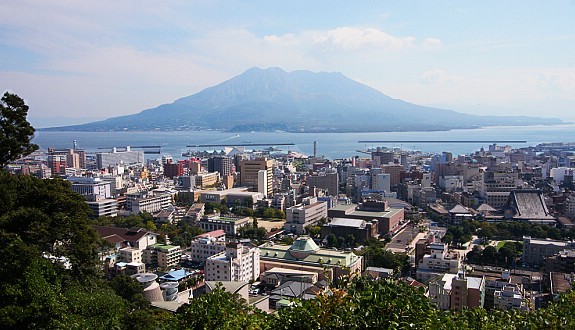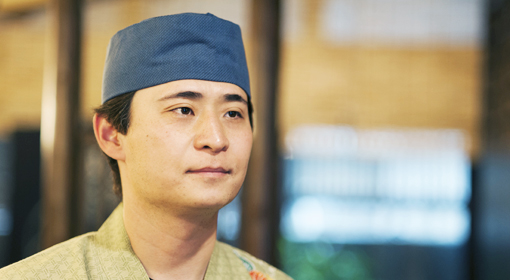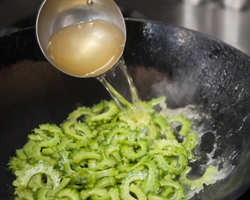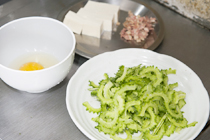 Japan City Guides: Miyazaki, Miyazaki Prefecture, Kyushu
Japan City Guides: Miyazaki, Miyazaki Prefecture, Kyushu
Miyazaki History | Miyazaki Attractions | Around Miyazaki | Miyazaki Hotels | Access
Miyazaki 宮崎
Miyazaki is the prefectural capital city of Miyazaki Prefecture on the south east coast of Kyushu. Miyazaki city is the largest city in the mainly rural prefecture with a population of over 365,000 inhabitants.
Miyazaki city is a pleasant seaside town popular with people on vacation and a fun place to base yourself to visit the many attractions the prefecture has to offer.
Miyazaki enjoys the most sunshine hours of any city in Japan and visitors come for the relaxed atmosphere as well as the castle towns of Aya and Obi, the scenic Nichinan Coast and the sub-tropical island of Aoshima. Inland is the scenic gorge, kagura dances and Shinto shrines of Takachiho.
Modern Sculpture at Miyazaki Culture Park
Miyazaki History
Modern day Miyazaki Prefecture was divided among a number of clans (domains) during the Edo Period (1603-1867) including the powerful Shimazu clan based in Kagoshima to the south, the Nobeoka clan to the north around the modern town of that name and the Sadowara and Obi clans.
Takachiho In Miyazaki is connected with the myths surrounding Japan's creation and the antics of such gods as Amaterasu, Tajikarao, Ameno-Uzume and Izanagi and Izanami at Amano Iwato Shrine, where the sun goddess Amaterasu was found hiding in a cave by Tajikarao and enticed out by a comic and bawdy dance by Ameno-Uzume, thus creating the world.
Miyazaki is also associated with the mythical first emperor of Japan, Jimmu. The Emperor Jimmu is supposed to have lived in the 7th century BCE and legendary site of his palace was placed in modern-day Miyazaki.
In 1940 the Hakko Ichiu pillar was constructed as part of the celebrations of the 2600th anniversary of the founding of Japan. The 37m-tall tower is now part of the Heiwadai-koen Peace Park. Hakko Ichiu ("Eight corners of the world under one roof") was a slogan adopted as part of Japan's growing colonial expansionism in the 1930s and 1940s. Other celebrations of this nationalistic "anniversary" in 1940 include the enshrining of the Emperor Komei, the father of Emperor Meiji and the last Japanese monarch to permanently live in Kyoto, in Heian Shrine.
Hakko Ichiu Monument, Heiwadai Koen, Miyazaki, Kyushu
Miyazaki Culture Park, Kyushu, Japan
Miyazaki Attractions
Miyazaki's attractions are mostly of the modern kind and include a number of worthwhile museums. The Miyazaki Prefectural Art Museum includes work by the Japanese artists Shiotsuki Toho, Yamada Shinichi, Nakazawa Hiromitsu, Yamaguchi Kaoru and Kitagawa Tamiji as well as such European masters as Pierre Bonnard, Pablo Picasso and Paul Klee.
The Miyazaki Prefectural Art Museum is located in the Miyazaki Culture Park, a pleasant urban green space with grass lawns, fountains, mountain art sculptures, a walking/jogging path and a cherry tree avenue, popular with residents in spring.
The Miyazaki Prefectural Museum of Nature and History is situated in the grounds of Miyazaki Jingu close to Miyazaki Jingu Station. The Miyazaki Prefectural Museum of Nature and History is surrounded by the open-air Miyazaki Prefectural Museum Minka-en, where four original rural dwellings, some of them over 200 years old, have been relocated from the hinterland of the prefecture to this location.
Miyazaki Science Center (Cosmoland) is right across from Miyazaki Station. The Miyazaki Science Center displays an impressive 40m-tall model of a Japanese H-1 rocket outside the building and inside the facility there is a scale model of the Apollo 11 spacecraft, which landed on the moon in 1969.
Other facilities at Miyazaki Science Center include a handicraft workshop, a space lab, an energy circus dedicated to alternative energy and nuclear power and a 6m-tall glass dome looking at the power of tornadoes.
The 27m planetarium at Miyazaki Science Center is one of the largest in Japan and has three shows on weekdays and four shows on weekends and Japanese national holidays.
Miyazaki Science Center (Cosmoland), Miyazaki, Kyushu
Tachibana Park lines the banks of the Oyodo-gawa River south of Miyazaki Station and is particularly attractive at night when the park's signature palm trees are illuminated.
The Heiwadai-koen Peace Park contains the former Hakko Ichiu Monument, now the Peace Monument, built with stones from around the war-time Japanese empire. Heiwadai Koen also has a collection of reproduction clay haniwa sculptures in the Haniwa Garden from the excavations of Kofun Period tombs at Saitobaru.
Miyazaki Jingu is dedicated to the mythical Emperor Jimmu and the shrine grounds are full of pleasant woods and roaming semi-wild chickens. Miyazaki Shrine hosts a number of festivals throughout the year including a demonstration of yabusame - horse back archery.
The aptly-named Phoenix Seagaia Resort is what remains of the original 1990s Seagaia Resort, which went bankrupt when the Japanese economic bubble burst in 2001. Restructuring of the massive seaside resort involved closing Ocean Dome, at the time the world's biggest indoor water park and artificial beach. The resort now has onsen hot spring baths, hotels, shops and restaurants, a zoo, golf courses and tennis courts. Hotels at the complex include the 154m-tall Sheraton Grande Ocean Resort, the Sun Phoenix Hotel and the condominium-type Luxze Hitosuba. The golf courses at the Phoenix Seagaia Resort include the Tom Watson GC, designed by the man himself, the Phoenix Country Club and the Phoenix Golf Academy.
Medikit Arts Center, Miyazaki, Kyushu
The Medikit Arts Center is a multi-functional concert hall and theater space with performances of Western classical music, musicals as well as Japanese musical genres. The Medikit Arts Center (Tel: 0985 28 3210) is home to Japan's largest pipe organ and is located in Miyazaki Culture Park.
Miyazaki's principal festivals are the Yabusame or horse-back archery held at Miyazaki Jingu in early April, a huge fireworks display in August over the banks of the Oyodo River, the Miyazaki Jingu Festival in October and the new Erekocha Matsuri with parades on Tachibana Dori around the end of July.
Miyazaki Prefectural Museum of Art, Miyazaki, Kyushu
Around Miyazaki
Takachiho
North of Miyazaki city, Takachiho is a spiritual center of Shinto mythology and the beautiful Takachiho Gorge, about three hours by car or bus from Kumamoto and over four hours from Miyazaki, attracts tourists from all over Japan.
Takachiho Gorge, Miyazaki, Kyushu
Aya Castle, Miyazaki Prefecture, Kyushu
Nichinan Coast & Cape Toi
The Nichinan Kaigan is a 50km stretch of coast known for its beautiful beaches and isolated coves. The area is popular with surfers and people who come to enjoy the superb ocean views at Cape Toi. The tiny islet of Kojima off Ishinami is home to a group of Japanese monkeys who have taken to washing their food in the sea. Sun Messe Park (Tel: 0987 29 1900) on the Nichinan Coast is a small theme park near Nichinan city with seven replicas of the famous Easter Island Moai statues.
Aya
Aya Castle is a lovely, reconstructed castle in the historic town of Aya, 40km north west of Miyazaki city. Aya is known for its handicrafts including local crafts, shochu, ceramics, woodwork as well as bamboo and lacquer ware. All of these products make excellent souvenirs and can be found in the Shusen-no-Mori complex 3km out of town. Shusen-no-Mori is centered around a shochu distillery, winery and local micro-brewery. There is also an onsen bath to relax.
Seven kilometers northwest of Aya is the Teruha Suspension Bridge (Teruha Otsuri-bashi), said to be one of the highest pedestrian suspension bridges in the world at 142m. (The Kokonoe "Yume" Otsurihashi in Oita Prefecture is now higher at 173m). The Teruha Suspension Bridge is 250m long and perched over a valley of beautiful evergreen forest and the Aya Minami River below. The name in Japanese means "shining leaves."
Teruha Suspension Bridge, Miyazaki Prefecture, Kyushu
Aoshima
Located 14km south of Miyazaki on the Nichinan Coast is the tiny sub-tropical island of Aoshima. Aoshima is ringed with beautiful, white sandy beaches and at low tide visitors can see the phenomenon of Oni-no-sentakuita, ("Devil's washboard"), basalt rocks on the sea floor resembling a washboard.
Aoshima-jinja on the island is dedicated to the Shinto kami, Yamasachi Hiko (the father of Emperor Jimmu), who is honored in two fairly bizarre festivals: one in June/July and the other in January. In the summer festival locals carry portable shrines (mikoshi) through the waves and in winter dive into the ocean wearing only loincloths.
There are a number of hotels to stay in Aoshima including the Hotel Route Inn Miyazaki Aoshima and the ANA Holiday Inn Resort Miyazaki.
Udo Jingu
Further south from Aoshima is Udo Jingu, the mythical birthplace of the Emperor Jimmu's father, Yamasachi Hiko aka Yamasachihiko. The shrine is popular with young couples hoping for (easy) childbirth and a happy marriage. Udo Jingu is located in a cave in the side of the cliff and has spectacular views out over the ocean. A pair of breast shaped rocks give Udo Jingu its reputation for a happy birth. Visitors are encouraged to try their luck at throwing undama - lucky ceramic balls - into the pool at the top of one of the rocks. Men throw with their left hands; women their right.
Teruha Suspension Bridge, Miyazaki Prefecture, Kyushu
Obi
Obi is a small castle town about one hour south of Miyazaki on the JR Nichinan Line. Only the castle walls and now dry moats survive of the original Obi-jo (Obi Castle), which was the power base of the local Ito clan, though the Ote-mon gate survives and the castle museum has the usual displays of samurai armor and swords and family treasures relating to the Ito family. The feudal lord's private residence Matsuo-no-maruhas been reconstructed in local cedar and just near the castle entrance is the Yoshokan, the former house of the daimyo's chief retainer, with a pleasant garden with "borrowed" views of Mt. Atago. The Ito family moved here when the feudal domains were abolished by the Meiji government in the 1870s. The Hanko Shintoku-do is an Edo Period school for young samurai dating from 1831. A single ticket allows entry to most of these sights. The Komura Memorial Hall (Komura Kinenkan) is dedicated to the life of locally-born Komura Jutaro, a Meiji era foreign minister who signed the 1905 Treaty of Portsmouth, ending the Russo-Japanese War.
Kirishima & Ebino Kogen
Kirishima in the northern part of Kagoshima Prefecture and Ebino Kogen straddling both Kagoshima and Miyazaki prefectures are natural areas known for their volcanic hot springs (onsen), crater lakes and forested mountain walks. Lake Fudo-ike is a beautifully clear, crater like that was used as a location in the James Bond movie, You Only Live Twice.
Fudo-ike (Lake Fudo), Miyazaki Prefecture, Kyushu
Shopping in Miyazaki
Miyazaki Station and the Ichibangai entertainment area are the best places to shop and pick up local souvenirs. The Miyazaki Prefecture Products Shop Konne (Tel: 0985 22 7389) has clay haniwa, tetsumugi textiles, fruit and vegetables including yuzu, shochu and kagura masks from Takachiho.
Hotels in Miyazaki
Miyazaki city has a number of good hotels and Japanese style accommodations to suit all budgets, whether you are a business traveler or budget back-packer. Situated around Miyazaki Station are JR Kyushu Hotel Miyazaki, the Toyoko Inn Miyazaki Ekimae, the APA Hotel Miyazakieki - Tachibanadori and the Hotel Grandy Miyazaki. See here for a full listing of available hotels in Miyazaki.
Access - Getting to Miyazaki
Miyazaki is the transportation hub for Miyazaki Prefecture.
Air
Miyazaki Airport (KMI) has flight connections to Seoul with Asiana Airlines, Taipei in Taiwan as well as domestic flights to Tokyo (Haneda Airport, 90 minutes), Osaka (Itami, 60 minutes), Fukuoka (40 minutes), Nagoya Centrair (70 minutes) and Naha in Okinawa (85 minutes).
From Miyazaki Airport
Miyazaki Airport is just 3km south of Miyazaki city. There are buses and rail connections (on the Miyazaki Kuko Line) to downtown Miyazaki city. Buses take 20 minutes and the trains just 8 minutes. There are also buses from Miyazaki Airport to Takachiho (4 hours, 30 minutes), Ebino Kogen (2 hours, 25 minutes), Aoshima (20 minutes), Hyuga (2 hours, 15 minutes), Nobeoka (3 hours), Saito (1 hour, 15 minutes), Aya (1 hour, 10 minutes), Miyakonojo, Udo Jingu, Nichinan and Cape Toi.
Miyazaki City, Miyazaki Prefecture, Kyushu
Ferries
Miyazaki Car Ferry has daily sailings to Osaka Nanko Port leaving at 7pm and arriving in Osaka at 7.30am the next day. From Osaka boats leave at 6.45pm Monday - Saturday and at 6pm on Sundays arriving in Miyazaki at 8.40am the next day on the 500km route. Contact telephone numbers are 06 6616 4661 in Osaka and 0985 29 5566 in Miyazaki.
The cheapest 2nd class fare ranges from 11,600 yen to 12,800 yen depending on the season.
There is a charge of 2,000 yen to transport pets in a special pet cage provided either by the passenger or the company. Bicycles and motorbikes as well as cars can all be transported.
See our Japan travel section for further details.
Trains
The JR Nippo Line runs to Kagoshima (2 hours) and Beppu (3 hours). The JR Nichinan Line has trains to Aoshima (30 mins) and Obi (65 mins). The Umisachi Yamasachi Limited Express is a sightseeing train that runs from Miyazaki Station to Nango along the Nichinan Coast on weekends, national holidays and selected holiday periods.
Nichinan Coast near Aoshima, Miyazaki Prefecture, Kyushu
Buses
There are long distance highway buses from Miyazaki Station to Fukuoka (4 hours), Kagoshima (2 hours, 30 minutes), Nagasaki (5 hours, 30 minutes) and Kumamoto (3 hours, 45 minutes).
Transportation within Miyazaki
Car hire is an option if you wish to see more of rural Miyazaki Prefecture including Takachiho with the main car rental chains situated around Miyazaki Station and at Miyazaki Airport.
Miyazaki Map
View Fukuoka Map & Map of Kyushu in a larger map

 Sakurajima and Kagoshima City seen from Shiroyama Park
Sakurajima and Kagoshima City seen from Shiroyama Park
 Mount Kaimondake seen from Cape Nagasakibana
Mount Kaimondake seen from Cape Nagasakibana

























































































 Repeated eruptions from the Sakurajima volcano have produced large amounts of ash draping the city center Sept. 15, the Kagoshima Local Meteorological Agency said. Eruptions from the volcano overlooking the city of Kagoshima began on Wednesday morning, dumping 217 grams of ash per square meter (7 ounces per 10 square feet), the third-highest level of ash to fall since records began in 1994. Volcanic ash covered much of Kagoshima's Tenmmonkan entertainment and business district on Thursday morning, visibly forming clouds as cars drove through it and many pedestrians covering their faces with towels or surgical masks to avoid breathing it in.
Repeated eruptions from the Sakurajima volcano have produced large amounts of ash draping the city center Sept. 15, the Kagoshima Local Meteorological Agency said. Eruptions from the volcano overlooking the city of Kagoshima began on Wednesday morning, dumping 217 grams of ash per square meter (7 ounces per 10 square feet), the third-highest level of ash to fall since records began in 1994. Volcanic ash covered much of Kagoshima's Tenmmonkan entertainment and business district on Thursday morning, visibly forming clouds as cars drove through it and many pedestrians covering their faces with towels or surgical masks to avoid breathing it in.



























 Bitter melons (Momordica charantia). Oriental variety. Note for the uneven pebble like longitudinally arranged ridges. The ends are round and blunt. Bitter melons hanging down in a vine. a variety commonly found in Indian subcontinent. Note for pointed ends.
Bitter melons (Momordica charantia). Oriental variety. Note for the uneven pebble like longitudinally arranged ridges. The ends are round and blunt. Bitter melons hanging down in a vine. a variety commonly found in Indian subcontinent. Note for pointed ends.


 ã�¾ã�šã‚´ãƒ¼ãƒ¤ãƒ¼ã‚’ç‚’ã‚�ã€�昆布カツオ出æ±�ã‚’åŠ ã�ˆã‚‹
ã�¾ã�šã‚´ãƒ¼ãƒ¤ãƒ¼ã‚’ç‚’ã‚�ã€�昆布カツオ出æ±�ã‚’åŠ ã�ˆã‚‹
 コンビーフ�ッシュ��ら���フライヤー�������豆�を入れる
コンビーフ�ッシュ��ら���フライヤー�������豆�を入れる
 水分����る��炒�煮��塩コショウ�醤油�味付��る
水分����る��炒�煮��塩コショウ�醤油�味付��る
 溶��を入れ�全体��ら�る
溶��を入れ�全体��ら�る





















